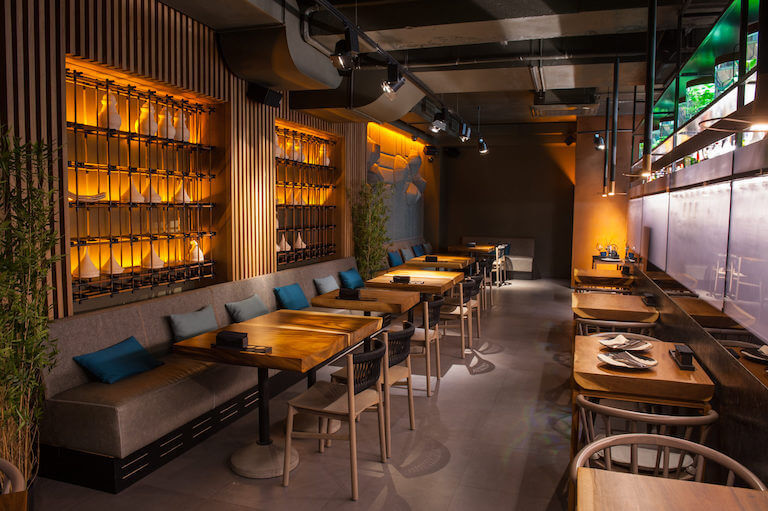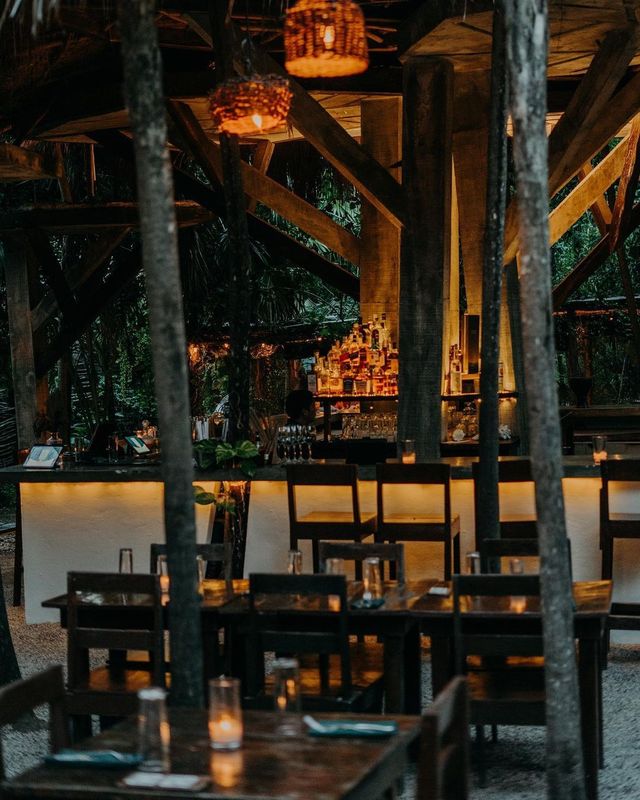Best Ambiance Restaurants Islamabad: Perfect Destinations for a Remarkable Dish
Best Ambiance Restaurants Islamabad: Perfect Destinations for a Remarkable Dish
Blog Article
Savor Authentic Eastern Food With a Pan-Asian Spin for a Cooking Experience
Starting a culinary trip via authentic Oriental food, enhanced with a Pan-Asian spin, uses an unique chance to check out the rich tapestry of tastes that specify the region's varied cooking practices. This experience invites you to enjoy the charming equilibrium of tastes-- wonderful, salted, spicy, and sour-- balanced by fragrant natural herbs and spices. Picture the ingenious fusion of Thai curry and ramen or the unforeseen delight of sushi burritos. As you consider these enticing dishes, take into consideration the cultural narratives and historical impacts that form them, each bite supplying a story waiting to be found.

Discovering Pan-Asian Flavors
In the realm of international gastronomy, Pan-Asian food attracts attention for its remarkable variety and the harmonious interaction of tastes from various Oriental cultures. This cooking method commemorates the rich customs and distinct active ingredients discovered across the continent, creating a tapestry of tastes that is both fascinating and enjoyable. Key to Pan-Asian cuisine is its ability to balance contrasting tastes-- sweet, salted, spicy, and sour-- while highlighting the freshness and quality of each component.
From the umami-rich soy sauce of Japan to the intense chili peppers of Thailand, Pan-Asian cuisine uses a comprehensive combination of tastes. These aspects are typically integrated in inventive methods, boosting dishes with layers of intricacy. As an example, using fragrant herbs such as lemongrass and cilantro, common in Vietnamese and Thai food, adds a refreshing brightness to dishes, while the incorporation of coconut milk delivers a creamy, abundant structure.
The focus on fresh produce and fragrant seasonings guarantees that each meal is not just a banquet for the taste buds but likewise for the detects. Pan-Asian cuisine invites restaurants to begin on a cooking trip, exploring the large and differed landscapes of Eastern gastronomy with every bite.
Combination Recipes to Try
While Pan-Asian food is commemorated for its conventional tastes, the contemporary culinary landscape is progressively accepting fusion dishes that mix these traditional elements with impacts from various other regions. This innovative method not just honors the abundant heritage of Oriental cookeries but likewise presents novel preference experiences that appeal to contemporary tastes buds.
A prime instance of such a fusion recipe is the Korean-Mexican taco, where marinated bulgogi beef is wrapped in a warm tortilla, covered with kimchi and a zesty gochujang-infused salsa. This mix weds the bold, mouthwatering flavors of Korea with the vivid, fresh aspects of Mexican cuisine. Likewise, sushi burritos have gained appeal, amalgamating the fragile virtuosity of Japanese sushi with the hearty, hand-held benefit of a burrito, frequently including fusion components like tempura shrimp and avocado with a drizzle of wasabi mayo.
Another noteworthy recipe is Thai curry ramen, which infuses the creamy, fragrant seasonings of Thai curry into the reassuring broth of typical Japanese ramen, creating an unified mix that tantalizes the detects. These combination dishes expand past plain novelty; they stand for a culinary discussion in between cultures, encouraging exploration and development worldwide of Pan-Asian cuisine.
Vital Active Ingredients and Seasonings
To truly value Pan-Asian cuisine, one need to understand the necessary active ingredients and spices that form its structure. This varied cooking style attracts from a rich tapestry of Asian traditions, utilizing an unified blend of textures and flavors. Key ingredients consist of soy sauce, fish sauce, and oyster sauce, which pass on a savory umami deepness necessary to Oriental recipes. Corresponding to these are rice vinegar and mirin, lending a fragile acidity and sweetness.
Fragrant aspects are pivotal, with lemongrass, garlic, and ginger being ubiquitous throughout various Pan-Asian recipes. These active ingredients give an aromatic base that boosts the complexity of flavors. Seasonings such as celebrity anise, cardamom, and cinnamon introduce warmth and character, echoing impacts from areas like China and India.

Cooking Techniques and Tips
Understanding the art of Pan-Asian food needs experience with its unique cooking techniques, each contributing to the vibrant tapestry of tastes this culinary custom is celebrated for. Central to these techniques is the stir-fry, a quick cooking strategy that protects the nutritional honesty and vivid shades of active ingredients. Using a frying pan, the stir-fry approach permits also warm distribution, important for attaining the particular structure and flavor equilibrium of Pan-Asian meals.
An additional basic strategy is steaming, particularly common in Chinese cuisine. This mild method preserves the natural tastes and nutrients of ingredients, making it excellent for fish and shellfish and veggies. Dumplings, a cherished staple, commonly take advantage of why not try this out steaming, causing soft, delicious appearances.
Barbecuing, also indispensable, imparts smoky depths to recipes such as Korean bulgogi or Japanese yakitori (pan asian restaurant Islamabad). This technique commonly entails marinating active ingredients, enabling tastes to penetrate deeply before food preparation over an open fire or warmer
Finally, mastering the art of balancing flavors-- pleasant, sour, salted, bitter, and umami-- is critical. Properly layering these components can elevate a recipe from common to phenomenal, offering a complicated and pleasing culinary experience that embodies the significance of Pan-Asian cuisine.
Eating Experiences Worldwide
Around the world, Pan-Asian food provides an unparalleled eating experience, commemorated for its abundant tapestry of flavors and vibrant presentations. This cooking sensation has actually transcended cultural limits, recording the hearts and tastes of food fanatics worldwide. In cosmopolitan cities like New York, London, and Sydney, Pan-Asian restaurants act as fusions where culinary traditions from Thailand, Japan, China, and beyond merge, giving restaurants with a diverse mix of dishes that highlight the region's diversity.
The international appeal of Pan-Asian cuisine hinges on its capacity to supply both credibility and development. Cooks skillfully wed typical components such as lemongrass, soy sauce, and miso with modern techniques, resulting in recipes that are both familiar and refreshingly new. This fusion permits diners to start a culinary journey that respects heritage while embracing modernity.
Furthermore, dining experiences are raised through attentively made settings that mirror the principles of Pan-Asian looks. From minimal Japanese-inspired interiors to dynamic Thai-themed spaces, each restaurant offers an one-of-a-kind ambiance that matches the culinary offerings. As a result, patrons are not merely consuming a dish yet partaking in a social experience, making Pan-Asian eating a truly global sensation.
Final Thought
The news expedition of Pan-Asian food supplies an extensive understanding of the detailed interaction of tastes and culinary practices across Asia. By embracing combination meals such as Thai curry ramen and sushi burritos, the culinary trip not only highlights the versatility of typical components however additionally showcases cutting-edge modern strategies. This gastronomic adventure, enhanced by necessary spices and cooking techniques, supplies a distinct chance to value the social diversity and cooking creativity that specify Pan-Asian cuisine on a worldwide scale.
Beginning on a culinary trip via authentic Asian cuisine, boosted with a Pan-Asian twist, supplies a distinct chance to check out the abundant tapestry of flavors that specify the region's varied cooking practices.In the world of global gastronomy, Pan-Asian food stands out for its remarkable click to find out more diversity and the unified interplay of flavors from different Asian cultures. Key to Pan-Asian food is its ability to stabilize contrasting tastes-- sweet, salted, spicy, and sour-- while highlighting the freshness and high quality of each active ingredient.

Report this page